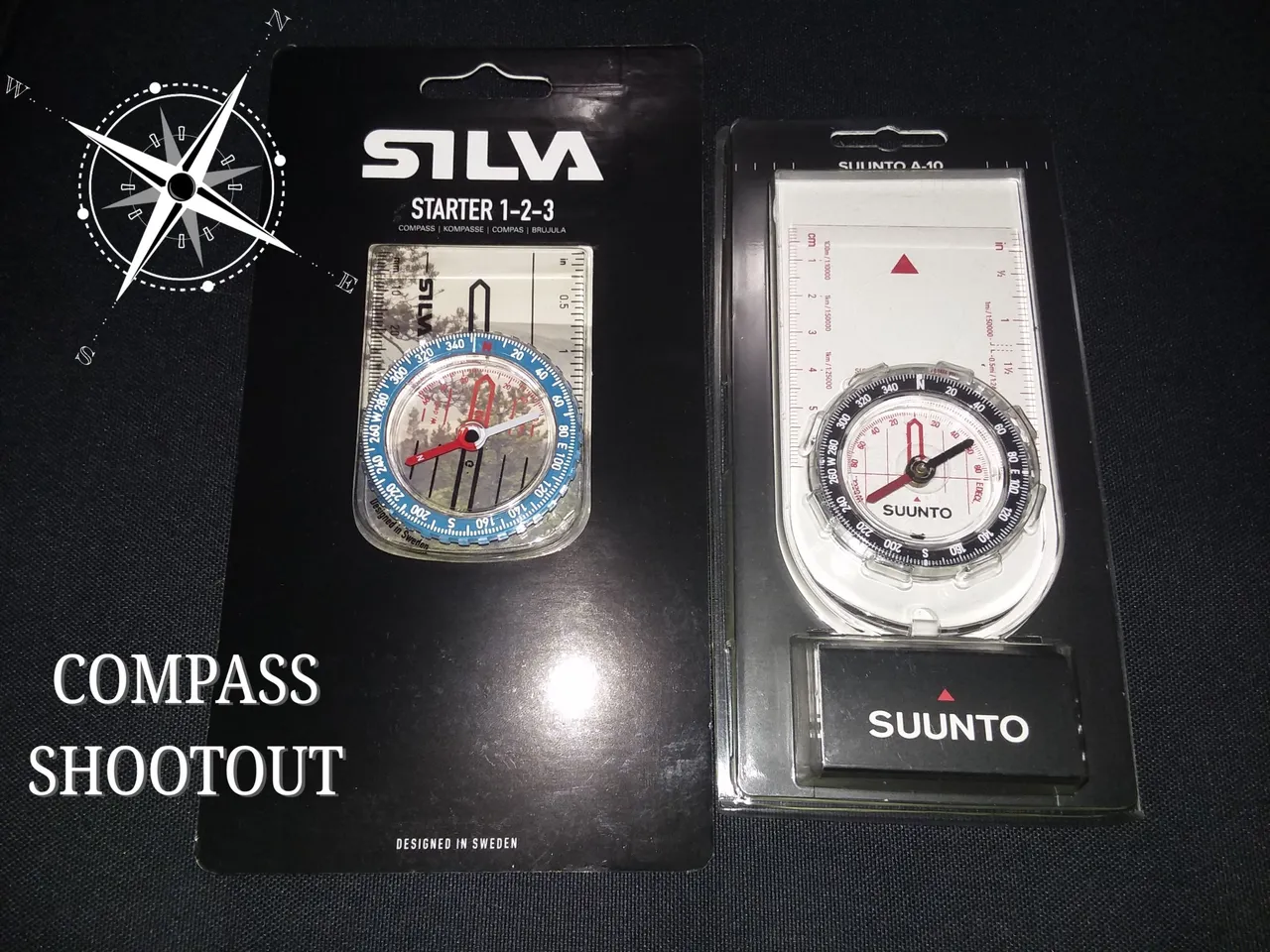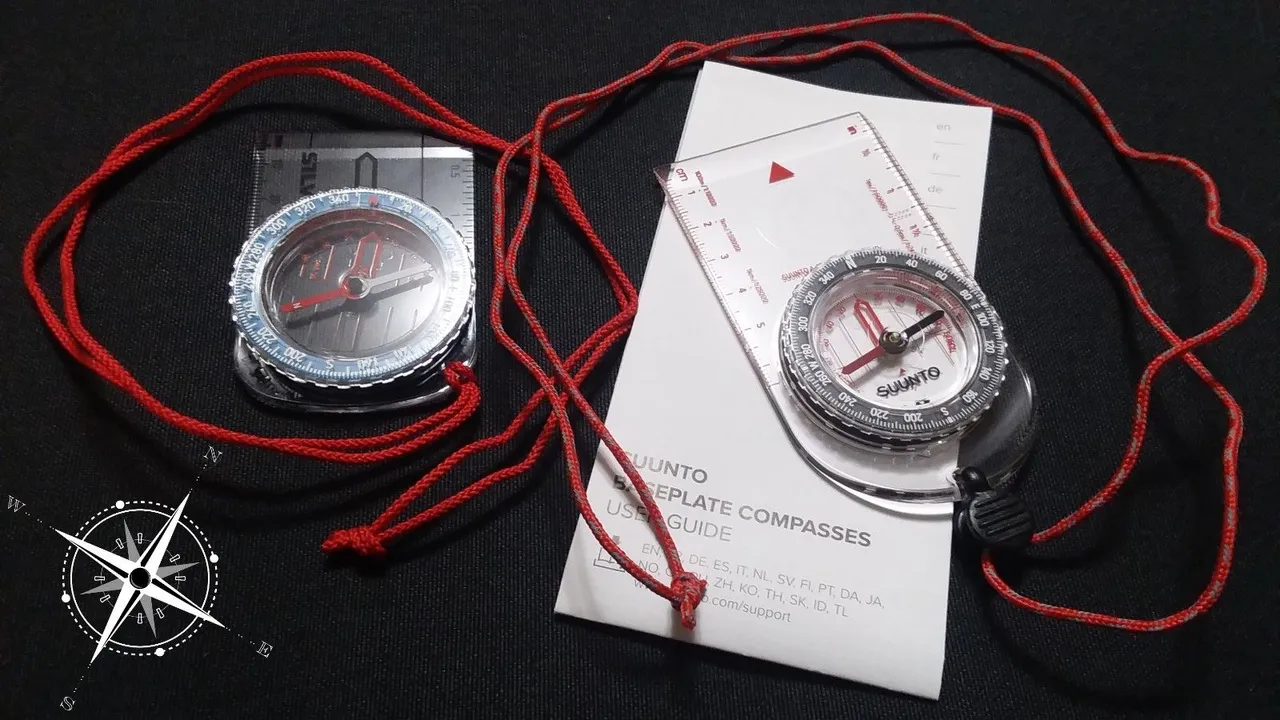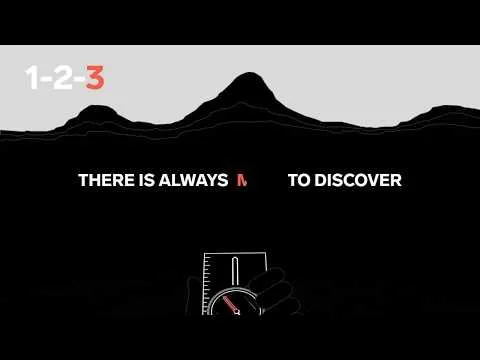I can't seem to find my old baseplate compass, so I bought two replacements to compare head-to-head. Neither is particularly expensive, with the MSRP for the Silva Starter 1-2-3 at $19.99, and the Suunto A-10 at $24.00. I should note this is not a long-term use review. I have not used either for serious orienteering, and both are definitely entry-level compasses, but both brands are reasonably reputable, and neither show bubbles in their liquid-filled dials.
Overview

Both use a clear plastic baseplate to improve navigation with a map. Dials are close enough in size to make no difference in practical use. Features are also the same in all basic respects. The smaller baseplate of the Silva fits inside an Altoids tin, if that matters for your emergency kit plans. Its black lettering shows up nicely on its own, but may be harder to read on a map than the red of the Suunto.
Opening the cardboard Silva packaging was a hassle. I used the EMT shears from my first aid kit to cut it apart. It just directs me to their website for a usage guide. The Suunto package was far easier to open, and included a decent fold-out paper guide to cover use. It has more plastic waste though, since it is a vacuum-formed clamshell.

Both include lanyards. The Silva lanyard was pre-tied, and the baseplate just has a lanyard hole for a lark's head hitch. While there is a channel molded in the underside, the cord may get in the way of setting the compass flat on a map during use. I needed to tie my own knot for the Suunto, but the cord holds a square knot well, and is slightly longer in my particular example. The black plastic clip can snap to the baseplate where it curves up slightly, ensuring the baseplate can lie flat on a map. It also has an internal hook to catch the cord, or one could forego the clip and just use a lark's head instead.
Feature Comparison
| Silva | Suunto | |
|---|---|---|
| Baseplate | Fits in an Altoids tin | Longer sides and scales for map bearings |
| Markings | Mainly black | Mainly red |
| Units | Metric/Inch | Metric/Inch with common scale & distance marks |
| Dial | Blue | Black |
| Origin | Made in China/Designed in Sweden | Made in Finland |
| Declination | Fixed scale | Fixed scale |
| Documentation | Online-only | Paper guide included |
| MSRP/Paid | $19.99/$16.64 | $24.00/$20.99 |
Conclusion
All told, I would recommend the Suunto unless the compact size of the Silva is critical to your use , e.g. an Altoids tin kit. Both were noticeably inaccurate inside my home due to electronics and ferrous objects distorting magnetic fields, but that is to be expected with any magnetic compass. Even in the field, tools, firearms, and electronic devices can throw off your readings if too close to your compass. Thanks to the inverse square law, this is easily mitigated if you're aware of the possibility.
What are your favorite compasses, whether budget-friendly or full-featured? Do you prefer these orienteering/baseplate/protractor models or the flip-open lensatic style? Where do you get maps when planning trips into the back country? Let's share some navigational knowledge in the comments! I may even share $PIZZA.


